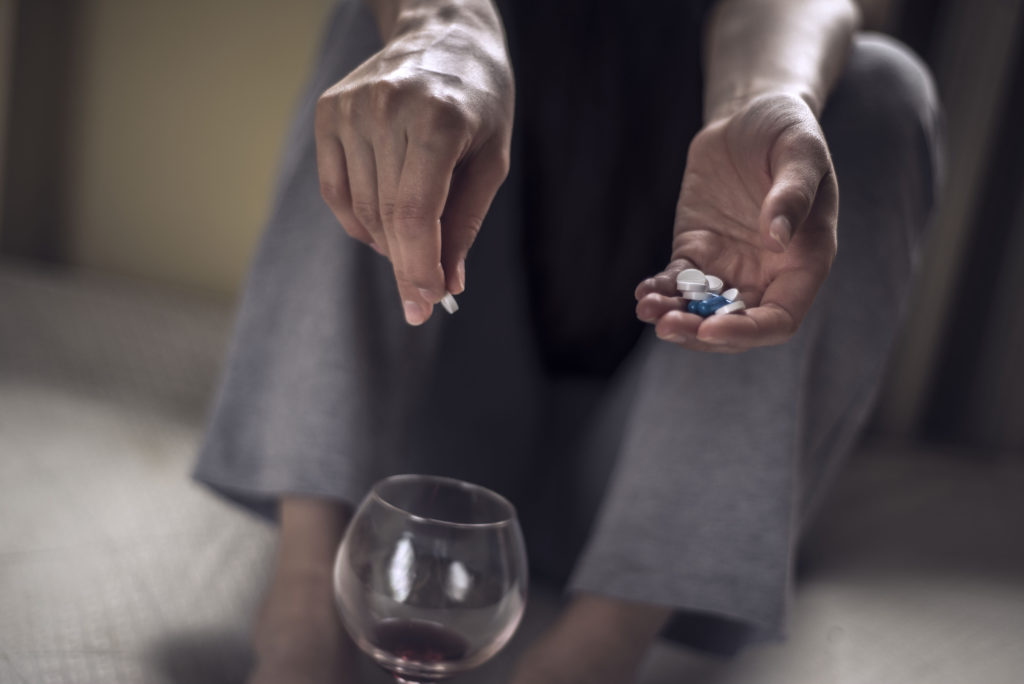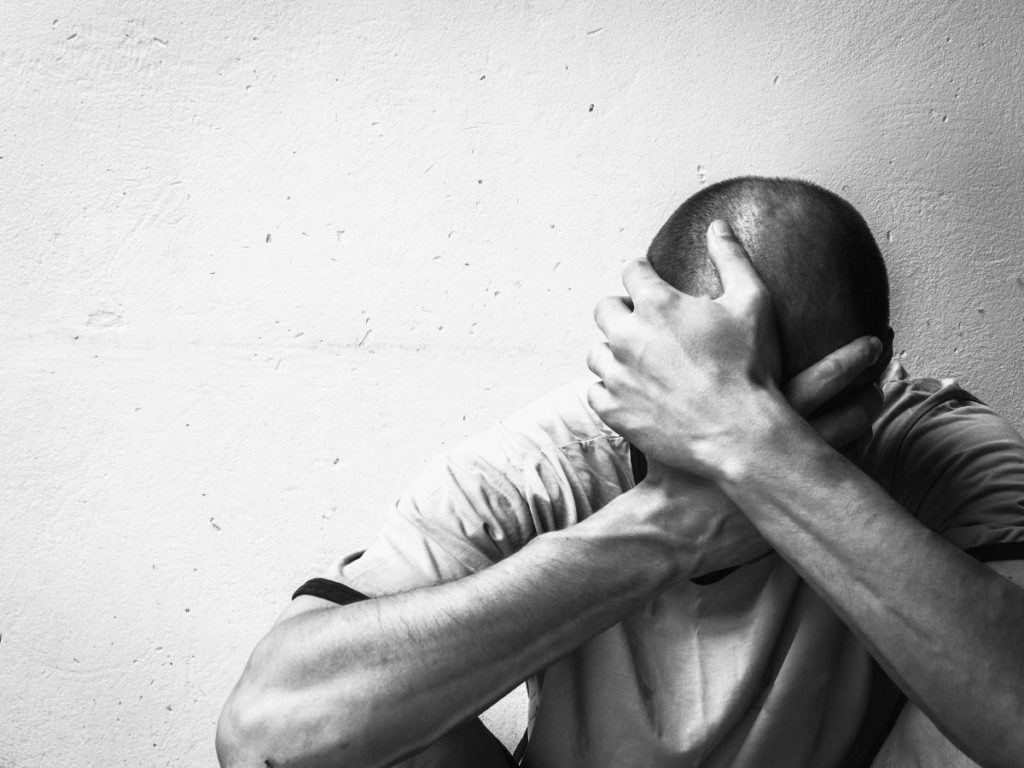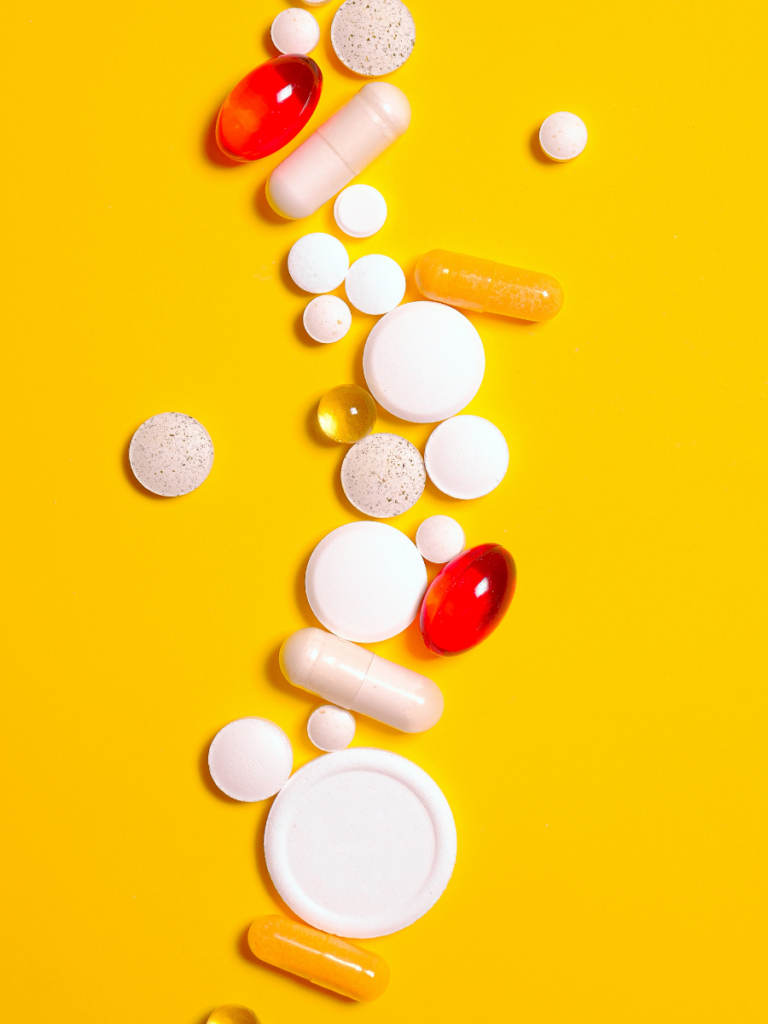Mixing prescription drugs with alcohol
You’ve probably seen this warning on medicines you’ve taken. The danger is real. Mixing prescription drugs with alcohol can cause nausea and vomiting, headaches, drowsiness, fainting, or loss of coordination. It also can put you at risk for internal bleeding, heart problems, and difficulties in breathing. In addition to these dangers, alcohol can make a medication less effective or even useless, or it may make the medication harmful or toxic to your body.
Some medicines that you might never have suspected can react with alcohol, including many medications which can be purchased “over-the-counter”—that is, without a prescription. Even some herbal remedies can have harmful effects when combined with alcohol. Medications typically are safe and effective when used appropriately. Your pharmacist or other health care provider can help you determine which medications interact harmfully with alcohol.
When you receive prescription medication, whether it’s an opioid painkiller like oxycodone, a depressant like Xanax, or a stimulant like Adderall, you’ll often find stringent warning labels about the risks of mixing prescription drugs with alcohol. When combined with the effects of alcohol, many otherwise routine prescription drugs can become deadly. Relaxing with a drink or two at night is dangerous when the effects of alcohol are combined with certain prescription drugs. Some people may like mixing prescription drugs with alcohol to intensify the effects of both substances. This can lead to a substance use disorder when the drugs are used together, especially in excess.

If you or someone you know is struggling with prescription drug addiction and/or alcohol addiction, it’s important to reach out for assistance. Facilities like We Level Up California provide treatment options for a variety of substance use disorders, including those involving alcohol and prescription drugs.
What Are Prescription Drugs?
Prescription drugs are a wide classification of medications that includes opioid painkillers, benzodiazepine (benzo) depressants, and amphetamine stimulants, among others. They can have a variety of uses, including relieving pain due to illness or surgery, helping calm anxiety, or maintaining impulse control. When used as directed, prescription drugs can effectively manage a variety of ailments and issues. However, when misused, they can often become addictive and dangerous, especially when combined with other substances like alcohol.
What Are the Side Effects of mixing prescription drugs with alcohol?
Prescription drugs have various side effects when taken alone, including drowsiness, nausea, changes in blood pressure, and loss of coordination. There are also long-term side effects to prescription drug use that may include liver damage, internal bleeding, and heart problems. The side effects vary from drug to drug, so it’s important to use a prescription medication only as it’s prescribed to prevent any unnecessary effects and be sure to consult your doctor if you have any questions.
While prescription drugs have side effects when taken exclusively, these effects can be exacerbated when combined with alcohol. Not only does alcohol impact the effects of prescription drugs, but it can also change the performance of the medications. In some cases, alcohol can completely negate the effectiveness of prescription drugs. In other instances, it can enhance their effects. Each substance has its list of potentially negative impacts that can be severely heightened when mixing prescription drugs with alcohol. Side effects may include:
- Headache
- Drowsiness
- Dizziness
- Fainting
- Nausea and vomiting
- Impaired breathing
- Internal bleeding
- Depression
- Seizures
- Liver damage
- Trouble sleeping
- Heart problems
Dangers of Mixing Prescription Drugs with Alcohol
In addition to negative side effects like nausea and drowsiness, mixing prescription drugs with alcohol can be extremely dangerous and even life-threatening. When certain drugs interact with alcohol, they create a potentially deadly reaction. Alcohol and medications can also change a person’s thoughts and actions, making risky behavior a definite threat.
Mixing prescription drugs with alcohol also impairs the medication’s desired impact, which often leads people to drink or ingest more substances to achieve a similar high. This increase can lead to an overdose or alcohol poisoning. With the risk of long-term organ damage and a host of short-term side effects, it is best to avoid combining alcohol and prescription drugs, especially in excess.
Medicines may have many ingredients
Some medications—including many popular painkillers and cough, cold, and allergy remedies—contain more than one ingredient that can react with alcohol. Before even thinking of mixing prescription drugs with alcohol read the label on the medication bottle to find out exactly what ingredients a medicine contains. Ask your pharmacist if you have any questions about how alcohol might interact with a drug you are taking.

Some medicines contain alcohol
Certain medicines contain up to 10 percent alcohol. Cough syrup and laxatives may have some of the highest alcohol concentrations.
Mixing prescription drugs with alcohol affects women differently
Women, in general, have a higher risk for problems than men. When a woman drinks, the alcohol in her bloodstream typically reaches a higher level than a man’s even if both are drinking the same amount. This is because women’s bodies generally have less water than men’s bodies. Because alcohol mixes with body water, a given amount of alcohol is more concentrated in a woman’s body than in a man’s. As a result, women are more susceptible to alcohol-related damage to organs such as the liver.
Older people face a greater risk
Older people are at particularly high risk for harmful alcohol–medication interactions. Aging slows the body’s ability to break down alcohol, so alcohol remains in a person’s system longer. Older people also are more likely to take a medication that interacts with alcohol—in fact, they often need to take more than one of these medications.
Timing is important
Alcohol and medicines can interact harmfully even if they are not taken at the same time. Mixing prescription drugs with alcohol puts you at risk for dangerous reactions. Protect yourself by avoiding alcohol if you are taking a medication and don’t know its effect. To learn more about a medicine and whether it will interact with alcohol, talk to your pharmacist or other health care provider.
Prescription Drug Addiction
Prescription drug addiction is a disease that affects a person’s behavior and brain; this condition represents a huge problem in the US. About 52 million Americans older than 12 have used prescription medications non-medically at some point in their lives. Being addicted to Prescription Drugs is a process that happens slowly.
Some people don’t notice the moment at which they shift from recreational abuse to intense addiction, but when addiction takes hold, it can be serious. Some people don’t notice the moment at which they shift from recreational abuse to intense addiction, but when addiction takes hold, it can be serious.
Prescription drugs are designed to treat certain medical conditions or ease the discomfort that diseases can bring. For people with medical conditions like asthma or cancer, and people with mental health conditions like depression or anxiety, prescription medications can mean the difference between a healthy and happy life or an upsetting and painful illness. But some people use prescription medications for reasons that have very little to do with illnesses. These people take prescription medications recreationally, and there are a lot of people just like this in the world.
Commonly Misused Prescription Drugs
- Opioids: are a class of drugs that include the illegal drug heroin, synthetic opioids such as fentanyl, and pain relievers available legally by prescription, such as oxycodone (OxyContin®), hydrocodone (Vicodin®), codeine, morphine, and many others. All opioids are chemically related and interact with opioid receptors on nerve cells in the body and brain. Opioid pain relievers are generally safe when taken for a short time and as prescribed by a doctor, but because they produce euphoria in addition to pain relief, they can be misused (taken differently or in a larger quantity than prescribed, or taken without a doctor’s prescription). Regular use—even as prescribed by a doctor—can lead to dependence and, when misused, opioid pain relievers can lead to addiction, overdose incidents, and deaths.
- Oxycodone (OxyContin): is commonly sold under the brand name OxyContin. It’s also sold in combination with acetaminophen as Percocet. It changes how your central nervous system (CNS) responds to pain. Like heroin, it creates a euphoric, sedative effect. According to the Drug Enforcement Administration (DEA), 58.8 million prescriptions for oxycodone were dispensed in the United States in 2013.
- Codeine: is typically prescribed to treat mild to moderate pain. It’s also combined with other medications to treat cold and flu symptoms. For example, it’s commonly found in prescription-strength cough syrup. When consumed in high quantities, codeine-based cough syrup has a sedative effect. It can also cause altered levels of consciousness. It provides the base for an illicit drug concoction known as “purple drank,” “sizzurp,” or “lean.” This concoction also contains soda and sometimes candy.
- Fentanyl: is a synthetic opioid. It’s prescribed for acute and chronic pain, typically in people with cancer. According to the Centers for Disease Control and Prevention (CDC), it’s 50 to 100 times stronger than morphine. It creates feelings of euphoria and relaxation. Fentanyl is also illegally manufactured and sold as an illicit recreational drug. In many cases, it’s mixed with heroin, cocaine, or both. In October 2017, the CDC reported that fentanyl is involved in over half of opioid-related overdose deaths across 10 states. In addition to the common signs and symptoms associated with opioid misuse, fentanyl misuse may also lead to hallucinations and bad dreams.
- Meperidine (Demerol): is a synthetic opioid. It’s often sold under the brand name Demerol. It’s typically used to treat moderate to severe pain. Like other opioids, it produces feelings of euphoria.

According to the CDC, 2,666 Americans died in 2011 from drug poisoning that involved opioid painkillers other than methadone, such as meperidine or fentanyl.
Reclaim Your Life From Mixing Prescription Drugs with Alcohol with Dual Diagnosis Rehab Washington
Mixing prescription drugs with alcohol can become a substance use disorder that can cause major health, social, and economic problems that should not be taken lightly. We Level Up dual diagnosis rehab Washington can provide you, or someone you love, with the tools to recover from this with professional and safe treatment. Feel free to call us to speak with one of our counselors. Our specialists know what you are going through. Please know that each call is private and confidential.
Sources
[1] National Institute on Drug Abuse (NIDA) (www.drugabuse.gov/)
[2] We Level Up Treatment Center – ‘Prescription Drug Abuse’





